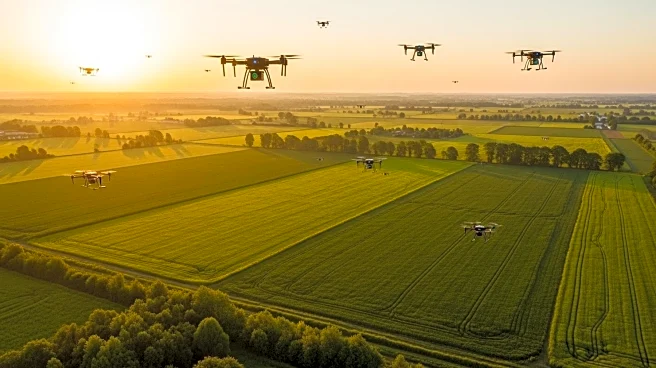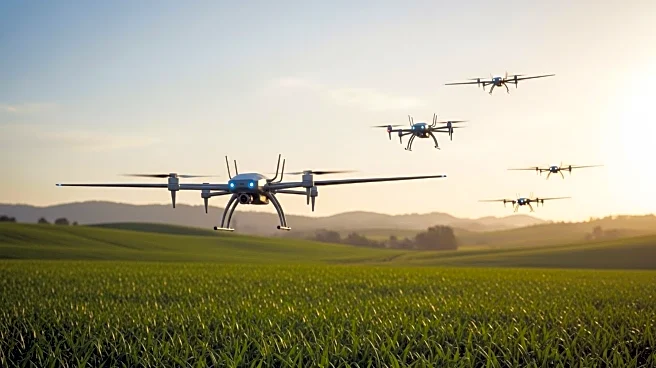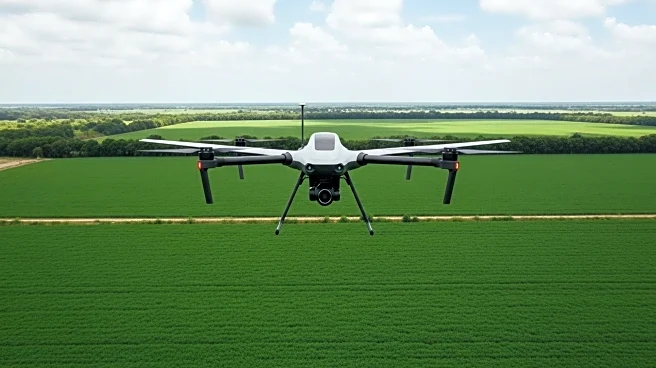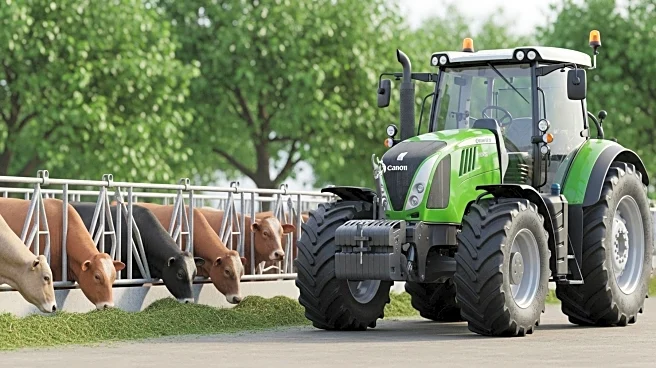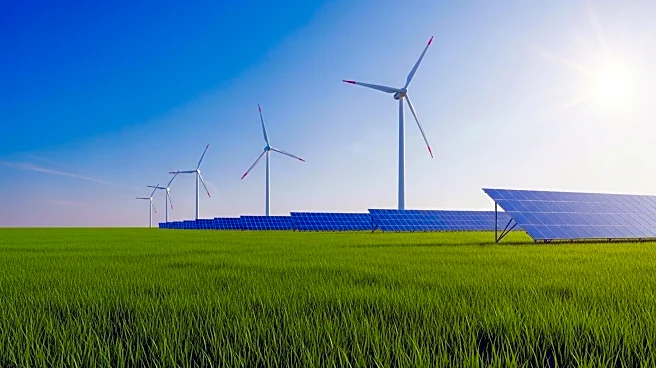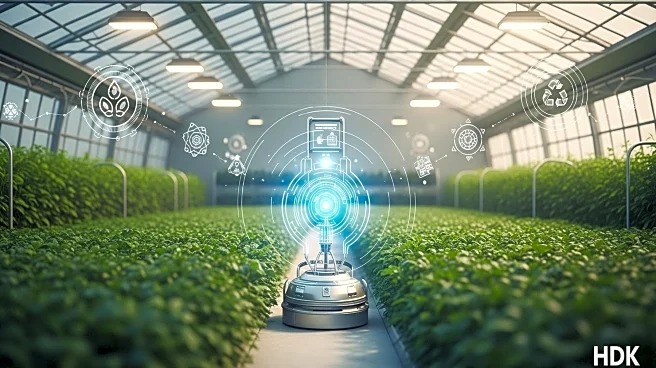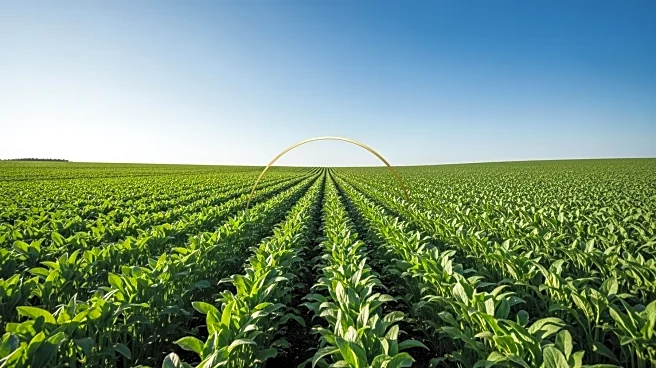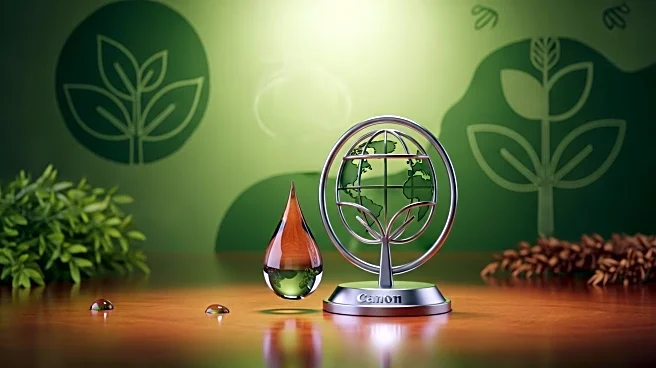What's Happening?
Nanodrones are emerging as transformative tools in agriculture, offering precision spraying and crop monitoring capabilities. These compact drones are equipped with advanced sensors that allow them to scan farmlands for pests, plant stress, and nutrient deficiencies. They provide high-resolution images and real-time insights, enabling farmers to apply fertilizers and pesticides precisely, thus saving costs and protecting the environment. In the United States, nanodrones are being employed for precision spraying and crop monitoring, integrating artificial intelligence for real-time analysis. This technology is particularly beneficial for smallholder farmers, who face challenges such as rising fertilizer prices, unpredictable climate patterns, and recurrent pest invasions. By offering precise application and early disease detection, nanodrones help prevent crop losses and enhance food security.
Why It's Important?
The adoption of nanodrones in agriculture is significant as it addresses several challenges faced by farmers, including high input costs and environmental concerns. By enabling precise application of fertilizers and pesticides, nanodrones reduce the excessive use of chemicals, thus protecting soil health and improving food quality. This technology also empowers smallholder farmers to increase productivity and efficiency, which is crucial for maintaining food security. As the agricultural sector faces increasing pressure from climate change and resource scarcity, nanodrones offer a sustainable solution that enhances farm management and monitoring. The integration of AI with nanodrones further amplifies their impact, providing farmers with actionable insights that can lead to better decision-making and resource allocation.
What's Next?
The continued growth and adoption of nanodrones in agriculture are expected to drive significant changes in farming practices. As more farmers become aware of the benefits of nanodrones, their use is likely to expand, supported by government initiatives and private sector partnerships. The National Agricultural Technology and Innovation Policy 2022-2027 recognizes the importance of digital tools, and nanodrones could serve as a flagship technology under this policy. With the right incentives, local agritech startups could collaborate with drone manufacturers to develop tailored solutions for various crops. Additionally, efforts to reduce import tariffs on drone components and provide subsidies or grants could make nanodrones more accessible to smallholder farmers, further enhancing their adoption.
Beyond the Headlines
The introduction of nanodrones in agriculture not only impacts farming practices but also has broader implications for environmental sustainability and rural development. By reducing pesticide use, nanodrones contribute to healthier ecosystems and protect biodiversity. They also offer a solution to the declining population of natural pollinators, such as bees, by supporting pollination. Furthermore, the technology empowers rural communities by providing them with tools to improve productivity and resilience against climate-related challenges. As nanodrones become more integrated into agricultural systems, they could lead to a shift towards more sustainable and efficient farming practices, ultimately contributing to global food security.

